The Scientific Programme will be composed of plenary lectures, keynote lectures, oral and poster presentations covering a diverse and multidisciplinary research agenda within the main conference topics.
The Social Programme is composed of a Welcome Reception, an Excursion, and conference Dinner, open to all participants, plus an extra program for the accompanying people.
You may find bellow in this page:
Scientific programme
The book of Abstracts of ISMEC2012 (the ISMEC2012 Acta book) will be available online only. You can download it from here (see bellow) or from the official ISMEC Acta website (soon).
But a list of the oral and poster communications will be given at the conference, when the participants make their registration. Bellow you can view and download them.
- Click to download the final programme.
- Click to download the final timetable.
- Click to download the list of poster communications
- Acta of the International Symposia on Metal Complexes (2012) (ISMEC2012 Acta book).
Timetable
The schedule for the ISMEC2012 programme (between 18-22 June 2012) is as follows:
| Monday, 18th |
Tuesday, 19th |
Wednesday, 20th |
Thursday, 21st |
Friday, 22nd |
| |
8.00-9.00 |
Registration |
|
| 9.00-9.15 |
Opening Ceremony |
| 9.15-10.10 |
PL1,
R. Chrichton |
9.10-10.10 |
PL3,
C. Orvig |
9.10-10.10 |
PL4,
C. Geraldes |
9.10-9.40 |
KN9, I. Billard |
| 10.10-10.30 |
OC4 |
OC31 |
10.10-10.30 |
OC12 |
OC39 |
10.10-10.30 |
OC17 |
OC44 |
9.40-10.00 |
OC25 |
| 10.30-10.50 |
OC5 |
OC32 |
10.30-10.50 |
OC13 |
OC40 |
10.30-10.50 |
OC18 |
OC45 |
10.00-10.20 |
OC26 |
| 10.50-11.20 |
Coffee break |
10.50-11.20 |
Coffee break |
10.50-11.20 |
Coffee break |
10.20-10.40 |
OC27 |
| 11.20-11.50 |
KN2, H.Kozlowski |
11.20-11.50 |
KN5, A. Bianchi |
11.20-11.50 |
KN6, R. Delgado |
10.40-11.10 |
Coffee break |
| 11.50-12.10 |
OC6 |
OC33 |
11.50-12.10 |
OC14 |
OC41 |
11.50-12.10 |
OC19 |
OC46 |
11.10-11.40 |
KN10, M. Valiente |
| 12.10-12.30 |
OC7 |
OC34 |
12.10-12.30 |
OC15 |
OC42 |
12.10-12.30 |
OC20 |
OC47 |
11.40-12.00 |
OC28 |
| 12.30-14.30 |
Lunch break, Exhibition and Poster Viewing |
12.30-12.50 |
OC16 |
OC43 |
12.30-14.30 |
Lunch break, Exhibition and Poster Viewing |
12.00-12.20 |
OC29 |
| 12.50-14.45 |
Lunch break |
12.20-12.45 |
OC30
(Pullidori Award) |
| 14.00-16.25 |
Registration |
14.30-15.30 |
PL2,
K. Raymond |
15.00-20.00 |
Excursion |
14.30-15.30 |
PL5,
L. Prodi |
12.45-13.15 |
Closing Remarks & Presentation of ISMEC2013 |
| 15.30-16.00 |
KN3, C. Exley |
15.30-16.00 |
KN7, E. Garcia |
| 16.00-16.20 |
OC8 |
OC35 |
16.00-16.20 |
OC21 |
OC48 |
|
| 16.25-16.55 |
Coffee break |
16.20-16.40 |
OC9 |
OC36 |
16.20-16.40 |
OC22 |
OC49 |
| 16.55-17.30 |
Welcome words
KN1, I. Villaescusa |
16.40-17.10 |
Coffee break |
16.40-17.10 |
Coffee Break |
| 17.30-17.50 |
OC1 |
17.10-17.40 |
KN4, P. Comba |
17.10-17.40 |
KN8, F. Secco |
17.50-18.10 |
OC2 |
17.40-18.00 |
OC10 |
OC37 |
17.40-18.00 |
OC23 |
OC50 |
| 18.10-18.30 |
OC3 |
18.00-18.20 |
OC11 |
OC38 |
18.00-18.20 |
OC24 |
OC51 |
| 19.00-20.00 |
Welcome Reception |
18.20-19.30 |
Poster Session-1 |
18.20-19.15 |
Poster Session-2 |
| 19.30-20.30 |
GTC Meeting |
20.15 |
Departure for Social Dinner |
PL - Plenary lectures; KN - Keynote lectures; OC - Oral communications
Invited speakers
Plenary lectures:
PL1 - Robert R. Crichton (U Catholique Louvain, Belgium)
"Redox metals in neurodegenerative diseases, and therapeutic perspectives" |
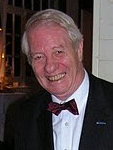 |
There is increasing evidence that redox-active metals, like iron and copper, are involved in a large number of neurodegenerative diseases by generating reactive oxygen species, resulting in oxidative damage to proteins leading to inflammation in specific brain regions. The potential of iron chelation will be reviewed. |
PL2 - Kenneth N. Raymond (U California, USA)
"Metal ion selective sequestering agents, with selective properties"
|
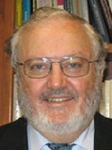 |
Bacteria produce small molecule chelators called siderophores for the selective sequestration of ferric ion. An early example is enterobactin, a tris catecholamide with a cyclic tri-serine scaffold. We have used these natural chelators as models for the production of metal ion specific chelating agents in support of new MRI enhancement agents, lanthanide time-resolved luminescence agents and actinide-specific sequestering agents. |
PL3 - Chris Orvig (U British Columbia, Canada)
"Medicinal inorganic chemistry"
|
 |
His labs study the roles of metal ions in the etiology, diagnosis and therapy of disease, encompassing a variety of metal ions as well as numerous ligand systems and a wide panoply of techniques and collaborations. Synthesis of organic ligands and inorganic complexes as well as physical (potentiometric and spectrophotometric titrations, various spectroscopies, electrochemistry, etc.) and biological studies (in cells, at UBC Bioservices and/or in collaboration) are undertaken in the research programme. |
PL4 - Carlos F.G.C. Geraldes (U Coimbra, Portugal)
"Metal-based chelates and nanosystems for multimodal molecular imaging applications"
|
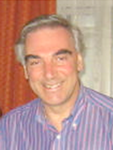 |
His research activities are focused on the assessment of metal based agents for multimodal targeted medical imaging agents, followed by in vitro and animal model evaluation using MRI and nuclear imaging techniques. We have used targeted and/or responsive metallodrugs based on macrycylic chelates or nanosystems (nanoparticles, micelles, liposomes) for multimodal imaging and theragnostics. |
PL5 - Luca Prodi (U Bologna, Italy)
"Luminescent silica nanoparticles: extending the frontiers of brightness"
|
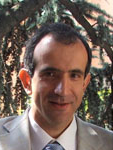 |
His research activity is dedicated to the synthesis and characterization of luminescent labels and sensors, using the supramolecular approach for the analyte recognition and the signal transduction steps. In this context, he is actively working on the synthesis and characterization of silica nanoparticles, in order to obtain more efficient sensors and labels through signal amplification. |
To timetable
Keynote lectures:
KN1 - Isabel Villaescusa (U Girona, Spain)
"The chemistry behind the use of bioassays to assess metal toxicity: pH influence, complexation equilibria" |
| |
|
KN2 - Henryk Kozlowski (U Wroclaw, Poland)
"Structural and thermodynamic aspects of thiol binding to metal ions in excentric proteins" |
| |
|
KN3 - Christopher Exley (U Keele, UK)
"Metal complexes defining aluminium's exposome" |
| |
|
KN4 - Peter Comba (U Heidelberg, Germany)
"Modelling of molecular properties. Fundamental principles and case studies with transition metal complexes" |
| |
|
KN5 - Antonio Bianchi (U Florence, Italy)
"Cation, anion and ion-pair binding with branched polyamines" |
| |
|
KN6 - Rita Delgado (ITQB/U Nova Lisbon, Portugal)
"Macrobicyclic architectures for recognition of anions and metal ions" |
| |
|
KN7 - Enrique García-España (U Valencia, Spain)
"Metal ion and anion coordination chemistry of pyrazole azamacrocycles" |
| |
|
KN8 - Fernando Secco (U Pisa, Italy)
"Interaction of hydroxamic acids with metal ions: from simple complexes to metallacrowns" |
| |
|
KN9 - Isabelle Billard (IPHC/DRS, Strasbourg, France)
"Mechanistic modelling of actinides and lanthanides extraction by ionic liquids: a first step towards a general model" |
| |
|
KN10 - Manuel Valiente (U Autònoma Barcelona, Spain)
"Chemical speciation in environment and biomedicine: examples to technological development"
|
| |
|
To timetable
To top
Social programme
All the participants and registered accompanying persons are invited to attend the Welcome Reception (June 18th), to go to the excursion to Sintra and Cabo da Roca (20th June), as well as to participate in the Conference Dinner (June 21st).
Furthermore, the inscribed accompanying people will have a special Lisbon Tour (June 19th; see bellow) and free entrance to visit the Gulbenkian Museum and the Modern Art Centre, both situated inside the Calouste Gulbenkian Foundation Park. The visit of these museums can be done in any day between June 18th-22nd, and for that it is required to use the "accompanying person" badge.
Click here to view the summary of the Social Programme.
Welcome Reception
On June 18th, a Welcome Cocktail (7-8 p.m.) will be held at the Real Palácio Hotel, a five star hotel rebuilt over a former seventeenth century palace that maintains its original layout.
A 10 min walk separates it from the ISMEC2012 venue (check the map bellow).

Real Palácio Hotel
Address: Rua Tomás Ribeiro 115,
1050-288 Lisboa
Tel: +351 213 199 500 |
See big map
|
To top
Excursion to Sintra/Cabo da Roca
Departure at 3 p.m. from the Conference Venue to visit Sintra, a town classified by UNESCO as World Heritage site as well as Cultural Landscape. Sintra was much appreciated by kings and nobles as a country resort and praised by writers and poets like Lord Byron who called it "glorious Eden". Very close to the historic centre of Sintra is Quinta da Regaleira, one of the town's most enigmatic sights. The palace of Quinta da Regaleira was built in the early 20th century by the millionaire António Augusto Carvalho Monteiro (1848-1920) with the help of the scenographic Italian architect Luigi Manini (1848-1936). Surrounded by lush green vegetation, the Palácio da Regaleira is a fascinating discovery. It was built in a Romantic revivalist style, in an imitation of Gothic, Manueline and Renaissance architectural and decorative forms, mixed with a mythical and esoteric symbolism.
The fantastic Palácio da Pena is one of the best examples of 19th-century Romantic revivalism in Portugal. Situated at the top of the Monte da Pena, the palace was built on the site of an old monastery belonging to the Order of St. Jerome and it was the fruit of the imagination of Dom Fernando of Saxe Coburg-Gotha, who married the queen Dona Maria II in 1836. The king consort adopted Portuguese architectural and decorative forms for the palace, which he built according to the revivalist taste (neo-Gothic, neo-Manueline, neo-Islamic, neo-Renaissance), and, in the surrounding area, he decided to make a magnificent woodland park in the English style, with a wide variety of exotic tree species. Due to time limitations (a long time is necessary to get to the top of Monte da Pena) and to the enormous number of visitors during summer, only a very limited number of participants will be allowed to visit Palácio da Pena, while the remaining will visit Quinta da Regaleira.
Piriquita is the most famous patisserie shop in Sintra, which has two traditional sweets: Queijadas and Travesseiros de Sintra. The store has been open since 1862 and it was considered the best one in Sintra. They also have all sorts of Portuguese pastries and sweets. Piriquita has two Tea Salons in the hystorical center of Sintra: the first one in Rua Padarias 1/7, and a second one (Piriquita II, in Rua Padarias 18), close to the first, where you can seat in an esplanade and enjoy the landspape. We are happy to offer each participant a voucher for Piriquita II, to try out a Queijada or Travesseiro de Sintra for free.
The visit will continue by descending Serra de Sintra till Cabo da Roca (at 9º 29.8' W), the westernmost point of Europe, with spectacular views of Roca Lighthouse, the raw Atlantic Ocean and the coast line. On the way back to Lisbon, the coastal road will be taken in order to pass by Guincho beach, Boca do Inferno, Cascais and Estoril.
Date: June 20th
Duration of visit to Quinta da Regaleira/Palácio da Pena: 1 hour
Free time to walk in Sintra
Expected maximum duration: 5 hours

To top
Conference Dinner
Departure at 8.15 p.m. on bus, from the Conference Venue to Centro Cultural de Belém (CCB), where the Social Dinner will be held in the Banquet Room Vitorino Nemésio.
The construction of CCB was decided in 1988 to accommodate the Portuguese European Union Presidency (1992). Nowadays it houses a Performing Arts Centre, an Exhibition Centre and a Conference Centre. The building is situated near the riverfront west of Lisbon and in a very emblematic square (Praça do Império), nearby Mosteiro dos Jerónimos, Torre de Belém e Padrão dos Descobrimentos.
Date: June 21th
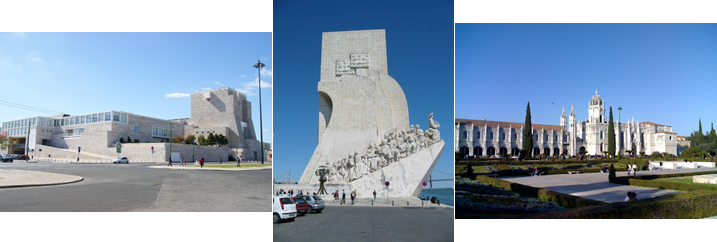
To top
Lisbon Tour (for accompanying persons)
A mini-van provided with touristic guide will leave the Conference Venue (9.30 a.m.) to initiate a Lisbon Tour. The visit will begin with Castelo de São Jorge, built in the mid-11th century, during the Moorish period, where exceptional views of the older part of the city and rio Tejo can be taken; then a walking tour in Alfama, the oldest and most typical quartier of Lisbon, will allow to visit the architecture, the sounds and the smells of old Lisbon. Finally, a stopover in Museu Nacional do Azulejo will present the Azulejo (Tile), an artistic expression which differentiates the Portuguese culture, as well as the building where it is located - the ancient Convent of Madre de Deus. The accompanying person will be taken back to the conference venue.
Date: June 19th
Expected maximum duration: 4 hours

To top |

